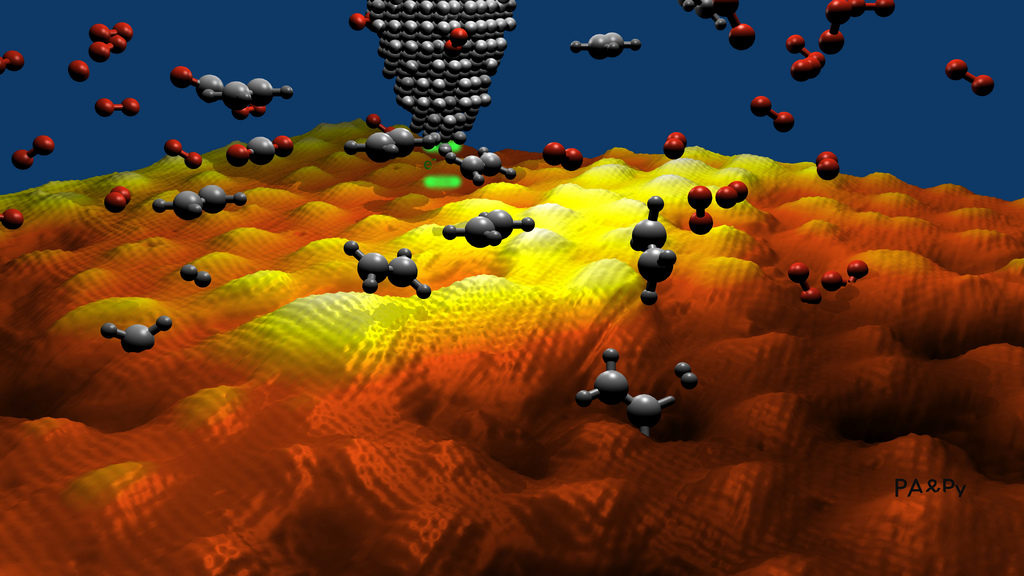
[Image above] Nano molecules on graphene. Credit: Brookhaven National Laboratory; Flickr CC BY-NC-ND 2.0
Happy Nanotechnology Day!
At the risk of sounding a little nerdy, I wanted to start today’s post with an appropriate greeting.
Did you even know there was a National Nanotechnology Day?
Just last week we were writing about Manufacturing Day, and now, #NationalNanoDay is here.
According to Nano.gov, National Nanotechnology Day is “an annual celebration featuring a series of community-led events and activities on or around October 9 to help raise awareness of nanotechnology, how it is currently used in products that enrich our daily lives, and the challenges and opportunities it holds for the future.” And the significance of 10-9 is a nod to 10-9 meters—the nanometer scale—or one-billionth of a meter.
But just what is nanotechnology and why is it important?
It’s the study of matter at nanoscale, on the order of 1–100 nanometers small. If you’re still trying to wrap your head around that, you can learn more over here in this Forbes article.
Materials display significantly different properties at the nanoscale than their regular-sized counterparts. Nanoparticles have very large surface areas, which affects how they react with surrounding materials. Larger surface areas help to create better catalysts for research in the oil, chemical, and fuel cell industries, for example. Read more about the importance of nanoparticles here.
Much of the research you read about on Ceramic Tech Today is done at the nanoscale level. For example:
In this research, scientists are making carbon nanotubes out of carbon dioxide.
These researchers used transmission electron microscopy to observe nanoparticle structures in lithium ion behavior.
Nanoparticles are playing a role in reflecting heat for energy-saving windows in this research.
And scientists are using carbon nanotubes for water filtration and desalination in this research.
For scientists looking to collaborate or just tap into a wealth of nanotechnology expertise, the U.S. Department of Energy’s Center for Functional Nanomaterials at Brookhaven National Laboratory is available to researchers as a resource for scientists involved in nanotechnology research.
But National Nanotechnology Day isn’t just for scientists. You can find all sorts of nanotechnology-related activities happening today around the country. In fact, all able-bodied people can don their workout clothes and participate in the 100 billion nanometer run today. If you’re social media-savvy, shoot a photo or video selfie during your run and upload it to social media with the hashtags #NationalNanoDay and #100BillionNanometers.
Because nanotechnology should always be fun.
Watch the video below to learn more about nanotechnology.
